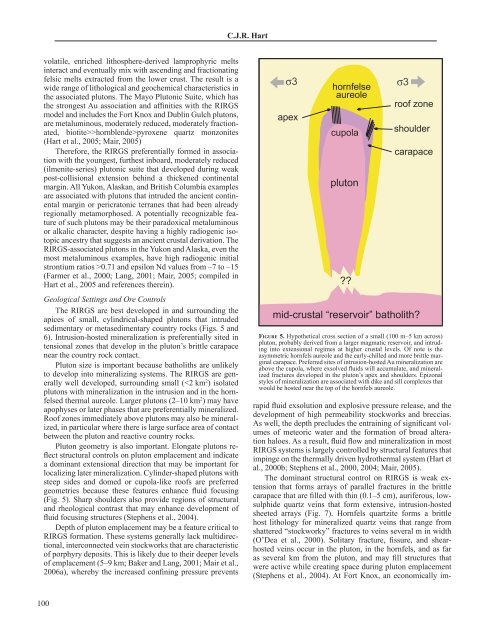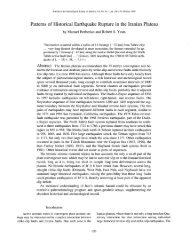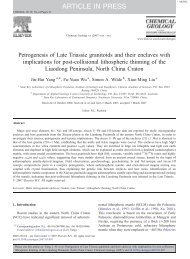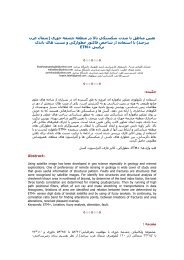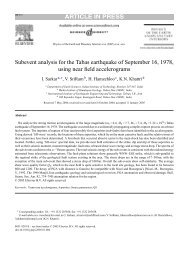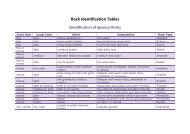Reduced Intrusion-Related Gold System - GSINET | Geological ...
Reduced Intrusion-Related Gold System - GSINET | Geological ...
Reduced Intrusion-Related Gold System - GSINET | Geological ...
You also want an ePaper? Increase the reach of your titles
YUMPU automatically turns print PDFs into web optimized ePapers that Google loves.
C.J.R. Hart<br />
volatile, enriched lithosphere-derived lamprophyric melts<br />
interact and eventually mix with ascending and fractionating<br />
felsic melts extracted from the lower crust. The result is a<br />
wide range of lithological and geochemical characteristics in<br />
the associated plutons. The Mayo Plutonic Suite, which has<br />
the strongest Au association and affinities with the RIRGS<br />
model and includes the Fort Knox and Dublin Gulch plutons,<br />
are metaluminous, moderately reduced, moderately fractionated,<br />
biotite>>hornblende>pyroxene quartz monzonites<br />
(Hart et al., 2005; Mair, 2005)<br />
Therefore, the RIRGS preferentially formed in association<br />
with the youngest, furthest inboard, moderately reduced<br />
(ilmenite-series) plutonic suite that developed during weak<br />
post-collisional extension behind a thickened continental<br />
margin. All Yukon, Alaskan, and British Columbia examples<br />
are associated with plutons that intruded the ancient continental<br />
margin or pericratonic terranes that had been already<br />
regionally metamorphosed. A potentially recognizable feature<br />
of such plutons may be their paradoxical metaluminous<br />
or alkalic character, despite having a highly radiogenic isotopic<br />
ancestry that suggests an ancient crustal derivation. The<br />
RIRGS-associated plutons in the Yukon and Alaska, even the<br />
most metaluminous examples, have high radiogenic initial<br />
strontium ratios >0.71 and epsilon Nd values from –7 to –15<br />
(Farmer et al., 2000; Lang, 2001; Mair, 2005; compiled in<br />
Hart et al., 2005 and references therein).<br />
<strong>Geological</strong> Settings and Ore Controls<br />
The RIRGS are best developed in and surrounding the<br />
apices of small, cylindrical-shaped plutons that intruded<br />
sedimentary or metasedimentary country rocks (Figs. 5 and<br />
6). <strong>Intrusion</strong>-hosted mineralization is preferentially sited in<br />
tensional zones that develop in the pluton’s brittle carapace<br />
near the country rock contact.<br />
Pluton size is important because batholiths are unlikely<br />
to develop into mineralizing systems. The RIRGS are generally<br />
well developed, surrounding small (


